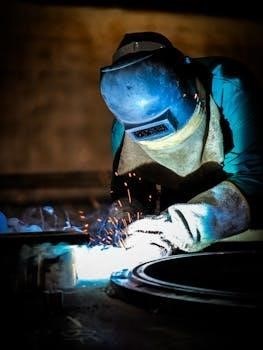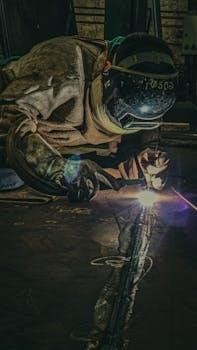
Safety Precautions
Always point the torch away from yourself and others when igniting the flame. Keep hands and your body clear of the torch head during operation because it becomes very hot.
This torch should be handled by literate adults, or used under constant adult supervision. It is crucial to ensure that the user is aware of the safety precautions before use.
Operate the torch in a well-ventilated area, far from ignition sources, sparks, open flames, or electrical cookware. Avoid using the torch in humid places or under water.
Keep Clear of Flames
When igniting the torch, always ensure that the nozzle is pointed away from yourself and any other individuals in the vicinity. This precaution is essential to prevent accidental burns or injuries. During operation, it is crucial to maintain a safe distance between your hands and the torch head, as it becomes extremely hot and can cause serious burns upon contact. Be particularly mindful of the high temperature of the torch head, which can remain hot for some time even after the flame is extinguished. Avoid any direct contact with the heated parts of the torch, both during and immediately after use. Ensure that flammable materials are kept at a considerable distance from the torch during operation to prevent accidental fires and ensure safety. Never operate the torch near any combustible substances and ensure that the area is clear of such items. Maintain a safe operating distance from the flame to protect yourself and your surroundings. Always double-check the direction of the torch before ignition and during operation.
Adult Supervision Required
The operation of this specialized torch requires the involvement of a literate adult who fully understands the safety instructions and operational procedures. It is not intended for use by children or individuals who are not capable of understanding and adhering to the safety guidelines. If a minor or an individual who has not read the safety instructions must operate the torch, it should always be under direct supervision of a responsible adult. This adult supervisor must ensure that all safety precautions are being followed and that the torch is being used correctly. The supervisor should be fully aware of the potential risks associated with using the torch and must be prepared to intervene if any unsafe practices are observed. The supervisor must also ensure that the user is completely familiar with the torch’s parts and the ignition process and flame adjustment before use. The torch’s operation is not for anyone who does not understand the risks. Strict supervision is vital to ensure safe operation.
Ventilated Area Use
It is absolutely essential to operate this torch in a well-ventilated area. This precaution is crucial to prevent the build-up of potentially harmful fumes and gases that may be produced during the torch’s operation. A well-ventilated space allows for the safe dissipation of these byproducts. Furthermore, the torch should be kept far away from any possible sources of ignition such as sparks, open flames, pilot lights, and electrical cooking appliances. Operating in an area that is not sufficiently ventilated can lead to the accumulation of flammable gases. Also, it is important to avoid using the torch in humid areas or underwater. These conditions can affect the torch’s performance and may also pose a safety hazard. Always ensure the workspace is clear of any obstructions and is well-ventilated before starting the torch to ensure that the gases produced are safely dispersed and that the torch operates safely and efficiently.

Torch Operation
Before operating, familiarize yourself with all the parts of your specific torch model. Understanding each component is crucial for safe and effective use.
To ignite the torch, ensure the gas is flowing and then press the ignition button. This process will activate the flame at the burner tube.
The torch’s flame length is adjustable, and it also has an air mixture control. Adjust these as needed for different tasks and desired flame size.
Parts Identification
Before using your torch, take time to identify all its components. This knowledge is essential for safe and correct operation. Typically, a micro torch includes a gas reservoir, a filling valve, an ignition button, a flame adjuster knob, and a burner tube, sometimes with a protective cap. The gas reservoir stores the fuel, usually butane, which is essential for the torch to function. The filling valve is where you refill the torch with butane. The ignition button initiates the flame. The flame adjuster knob allows you to control the intensity and size of the flame. The burner tube is where the flame is produced; Make sure you know the location of each of these parts on your specific torch model, as they may vary slightly between models. Understanding these parts ensures efficient use and proper maintenance.
Ignition Process
To ignite your torch, begin by removing any protective cap from the trigger and gas control knob. Next, turn the flame adjuster knob counter-clockwise to initiate gas flow. You will hear a hissing sound, indicating gas is escaping through the burner tube. Now, press the ignition button repeatedly until a flame appears at the burner tube. If the torch does not ignite immediately, repeat the process, ensuring that the gas is flowing properly. Be certain to always point the torch away from yourself and others during ignition. Once the flame is lit, observe it to make sure it is stable and of the desired size. Familiarize yourself with the ignition process before each use to ensure safe operation and a consistent flame.
Flame Adjustment
The torch features an adjustable flame length, allowing you to customize it for various tasks. To adjust the flame, locate the flame adjuster knob, typically situated near the base of the torch. Turning this knob counter-clockwise increases the flame length, while turning it clockwise decreases it. The torch is also equipped with an air mixture control, which allows you to fine-tune the flame’s intensity and color. Experiment with the adjuster to achieve the precise flame required for your specific application. Remember to make small adjustments and observe the flame’s behavior to prevent accidental over-adjustment or extinguishing. Proper flame adjustment ensures optimal performance and safety during use.

Fuel and Refilling
For optimal performance, use torch blue butane fuel. Using other fuels might damage the torch and affect its performance. Always ensure that you are using the recommended fuel type.
Flip the torch upside down. Insert the gas canister nozzle into the port, pressing down for a few seconds. Refill in a well-ventilated area.
Recommended Fuel
For the best and safest performance of your special blue torch, it is highly recommended to use only high-quality butane fuel specifically designed for torch lighters. Torch blue butane fuel is the suggested choice due to its consistent purity and reliable burning characteristics. Using inferior or non-recommended fuels may lead to several issues. These include inconsistent flame, clogging of the torch mechanisms, and potentially dangerous flare-ups. Moreover, using the wrong fuel can shorten the lifespan of your torch and potentially void any warranty. Always ensure that the butane fuel you choose is specifically labeled for use in torches. Avoid using fuels intended for other applications as they may contain impurities that can damage your torch. Look for a reputable brand that guarantees quality and safety. Always store fuel canisters in a cool, dry place away from direct sunlight and heat sources. This prevents any risk of leaks or explosions. Remember, using the correct fuel is crucial for both the performance and safety of your blue torch.

Refilling Instructions
To refill your special blue torch, first, ensure the torch is completely turned off and cool to the touch. Locate the filling valve, typically found on the bottom of the torch. Turn the torch upside down so the valve faces directly upwards. Take your butane fuel canister and align the nozzle with the refill valve on the torch. Press the canister firmly down onto the valve, holding it in place for a few seconds. You should hear a hissing sound, which indicates that the fuel is transferring into the torch’s reservoir. Do not overfill the torch; a few seconds is usually sufficient. Remove the canister and allow the torch to rest for a minute to allow the fuel to stabilize before attempting to use it. Always refill in a well-ventilated area away from any open flames or ignition sources. Be sure to use only the recommended type of butane fuel for optimal performance. After refilling check the torch for any leaks.

Maintenance and Storage
Before each use, inspect the torch and its components for any damage or wear. Always replace damaged parts immediately. Ensure the torch is in good working condition.
Do not store the torch under direct sunlight or where temperatures can exceed 40°C. Always store the torch in a safe, cool, and dry location.
Checking Condition
Before operating the torch, it is essential to thoroughly check its condition. Inspect the torch body for any cracks, dents, or signs of damage. Verify that all connections are secure and that there are no loose parts. Examine the torch head and nozzle for any blockages or obstructions that could affect the flame. Pay close attention to the gas control knob, ensuring it turns smoothly and is not damaged. Check the ignition button to make sure it functions correctly. If the torch has a burner holder, check that it is securely attached and in good condition. Always replace a damaged or worn torch immediately to prevent accidents. It’s crucial to ensure the torch is in optimal working condition before igniting any flame. A regular inspection will contribute to safe and efficient use. Additionally, review the instructions and warnings periodically to maintain awareness of proper operation. Be certain that the cables are in good working order and not damaged, if it applies to your torch model. This will ensure a longer lifespan and safer usage.
Safe Storage Practices
When not in use, always store the torch in a cool, dry place away from direct sunlight and any sources of heat or ignition. Ensure the torch is completely cooled down before storing it. Do not store the torch where temperatures may exceed 40 degrees Celsius. Keep the torch away from flammable materials and out of reach of children. If your torch has a protective cap, make sure it is securely attached to prevent accidental ignition. Store the torch in an upright position to prevent any fuel leakage. It’s best to store the torch in its original packaging or a designated container to protect it from physical damage. Before storing the torch, make sure the gas control knob is turned off and that there is no remaining fuel in the torch. Regular checks of the torch’s storage area will help prevent any accidents. Proper storage practices are essential for ensuring the longevity of the torch and for maintaining safety. It’s always a good idea to review storage procedures periodically.